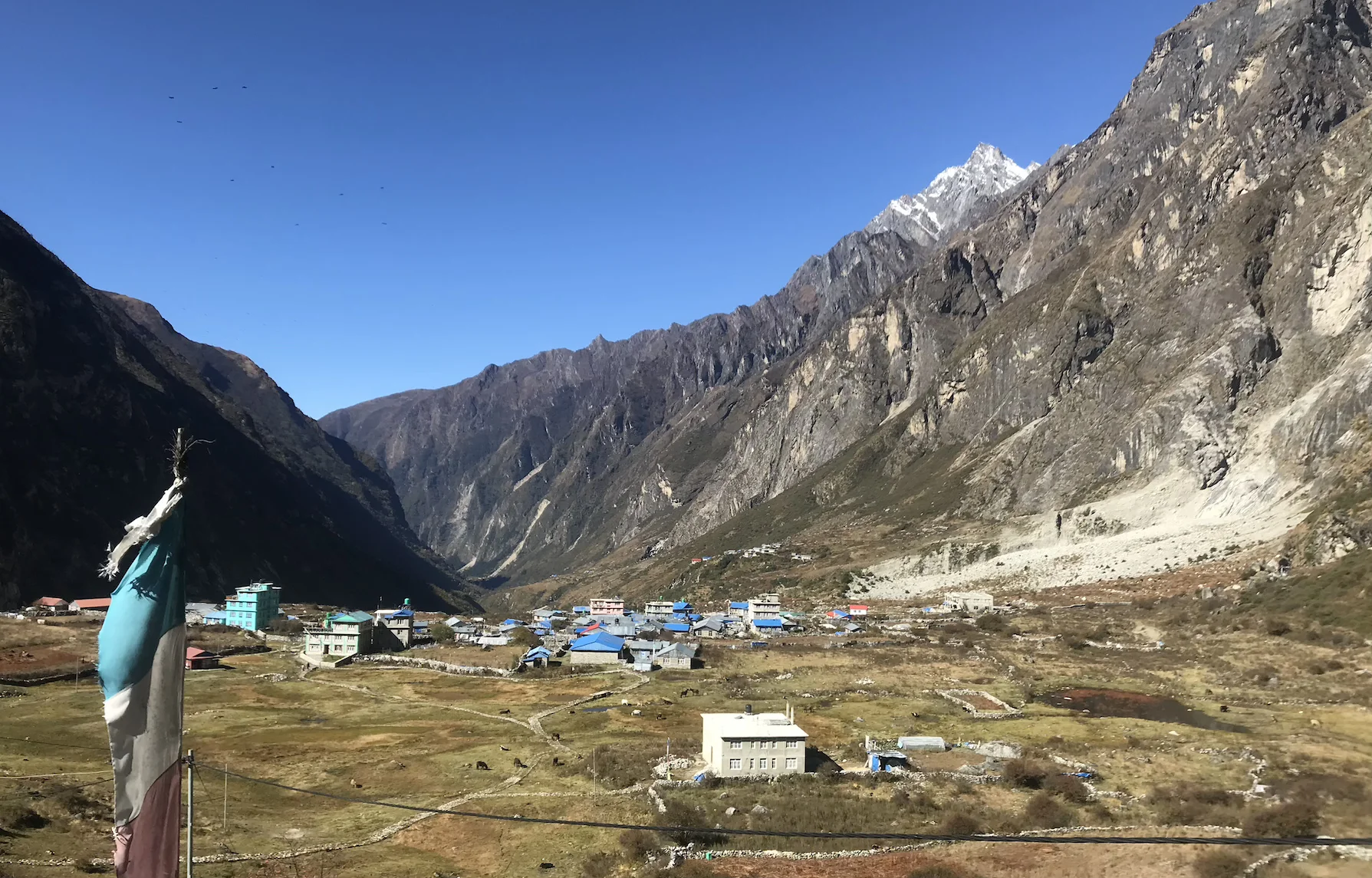
- 2 years ago | 2022-02-15
- Jugal Himal
Langtang Village's Resilience - A Before and After Story
The Langtang region is located from north of Kathmandu, close to the border of Tibet, one of the most popular destinations for the trekking enthusiasts, situated in Nepal. Many people visit the Langtang Valley, which is famous for its beautiful scenery, snowy mountains, and the exciting way of life of the local people. Each year, thousands of tourists come to explore this stunning area for Gosainkunda Lake Trekking (A religious place for Hindus and Buddhists), Langtang Village Trek, and Langtang Ganja La Pass Trekking.
But Langtang Valley's fate took a devastating turn on April 25, 2015, when a massive earthquake followed by an avalanche buried the village under rubble, claiming the lives of many. The village that once stood as a popular stop for thousands of travelers was entirely destroyed. However, Langtang's resilience is remarkable. In this article, we will discuss how the villagers of Langtang overcame the challenges of the earthquake and how they have rebuilt their community, stronger than ever.
Langtang Village Before the Earthquake
Life in Langtang Village was simple but good. The local people, mainly comprising of Tamang, Sherpa, and Gurung, would wake up early, finish their household chores, take their yaks and mules to graze, and head to the fields. Many villagers operated lodges for trekkers, and some worked as Langtang Valley trek guides and porters. Homestays were turning into lodges, and locals were earning better than before. The village was becoming increasingly popular among tourists, including foreigners and internal travelers. The Gompas (Buddhist shrines) attracted tourists and Buddhist devotees, and Kyanjin Gompa was becoming more popular.
Langtang Village After Earthquake
On the day when an earthquake on April 25, 2015, a Huge Avalanche was Triggered by the Earthquake. The day before, the whole community of Langtang inhabitants had celebrated Ghawa – a yearly celebrated Buddhist ritual that was started by playings, and pujas and ended with all the villagers which had flocked together to sing and dance with the neighboring villages where they drank, sang, and danced.
As the celebration lasted until midnight, the next day was a bit different than usual. People woke up later than usual, and unlike other days, they stayed in bed longer. The villagers were busy with their work, and some trekkers had already continued their trek toward their destination, while others were resting and enjoying the heavenly environment.
At 11:55 am, the unexpected happened. The violent shaking of the land made everyone panic and run for their lives. The violent quake resulted in a massive avalanche. It looked like the entire mountain was crumbling down. The village, home to over 400 people and a popular stop for thousands of travelers, was buried in ruins. Most of the villagers and travelers lost their lives.
Survivors were mourning over their missing loved ones who were missing in the Rubble created by the Avalanche which was triggered by the Earthquake, and some were in a hurry for their loved ones to search for them. After the earthquake, there were smaller tremors that kept happening for many days. These aftershocks made the land even more unstable, which made the risk of greater landslides and avalanches. Gradually, rescue work began to gain momentum. The survivors and rescuers started rescuing the victims from the site, and they recovered many dead bodies from the mudslide.
Rescuers evacuated villagers by local helicopters to safer villages, and injured people were taken to hospitals. The search for survivors and dead bodies continued for days. After a few days of rescue, authorities have to call off the search and rescue attempts, as the constant risk of aftershocks, landslides, and avalanches is triggering.
Langtang Village's Resilience
It has been over five years since the tragedy, and Langtang Valley is already opened for trekkers for three years. Several foreign researchers have studied the region and marked the Langtang region as safe.
Villagers have built a new village near the buried one, and life is becoming normal again. Despite losing everything, the villagers have shown remarkable resilience, and they are stronger than ever. Today, the lodges are popular among adventure enthusiasts, hikers, and nature lovers.
In addition to the stunning natural surroundings, lodges often offer a unique and rustic atmosphere that can be hard to find in traditional hotels. The accommodations themselves can range from simple cabins to more luxurious suites, depending on the lodge.
Eco-Lodge has been designed for a minimal impact on the environment where these lodges use renewable energy sources, minimize waste, and use eco-friendly building materials. They also typically offer opportunities for guests to learn about the local ecology and participate in conservation efforts.
After the earthquake in Nepal, many people tried to help by sending money and materials to Langtang Valley. Unfortunately, not all the support reached the people who needed it. A better way to help is to visit Langtang Village with your friends or family during your vacation. This will help the locals become more self-sufficient and improve their economic situation.
Despite the destruction caused by the earthquake, the locals have worked hard to rebuild the trails and lodges for trekkers. They are eager to show visitors their beautiful homes and share their culture.
If you're interested in trekking, you can visit Langtang Village with our team. If you have any questions or queries regarding Langtang Valley and its surroundings like Gosainkunda Lake Trek, Langtang Village Trek, and Langtang Ganja La Pass Trekking. Reach us. we would be glad to help
